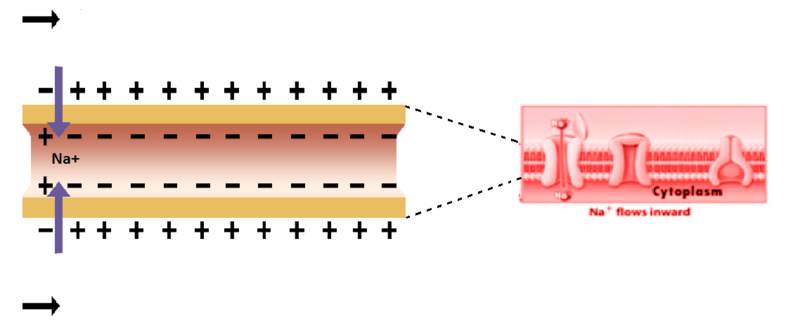11th And 12th > Biology
NEURAL CONTROL AND COORDINATION MCQs
:
B
The picture depicts the procedure of Synaptic Nerve Impulse Transmission. The impulse travels along the following order to reach the target neuron or organ :
•Depolarisation of presynaptic neuron ⇛• Opening of Calcium channels ⇛•Calcium influx ⇛• Release of neurotransmitter ⇛• Diffusion of neurotransmitter across the synaptic cleft ⇛• Neurotransmitter binds to receptors on the postsynaptic membrane.
:
B
In humans as in other mammals, thermoregulation is an important aspect of homeostasis. The hypothalamus lies at the base of the thalamus and contains a number of centres which regulate body temperature, thirst and appetite.
:
B
Schwann cells, also called neurilemma cells, which are cells in the peripheral nervous system that produce the myelin sheath around neuronal axons.
:
B
A spinal nerve is a mixed nerve, which carries motor, sensory, and autonomic signals between the spinal cord and the body. In humans, there are 31 pairs of spinal nerves, one of each pair present on either side of the vertebral column.
:
B
The organ of Corti is located in the cochlea of the inner ear, between the vestibular duct and the tympanic duct. It is composed of mechanosensory cells, also known as hair cells. It produces nerve impulses in response to sound vibrations.
:
A
The Sodium potassium pump and the K+ leakage channels are responsible for establishing and maintaining the resting membrane potential. The K+ leakage channels allow the primary positive ion in the cell to diffuse out along its chemical gradient, and the sodium potassium pump transporting 2 positive ions inside for every 3 positive ions thrown outside also help establish the electric potential of a resting neuron. Neurons do not have Na+ leakage channels and the ligand gated sodium channels play a role in depolarisation of the neuron and voltage gated calcium channels in synaptic transmission.
:
B
The Refractory Period, after an action potential is the period during which the neuron resists the production of another action potential;
Two types of Refractory Periods are seen :
1. Absolute Refractory Period (1-2 m/sec) : The voltage gated sodium channels are closed by the inactivation gates, and not the voltage regulated gate, and therefore do not open even to high levels of depolarization. Therefore action potential will not fire even at a very high stimulus.
2. Relative Refractory Period : In this period the inactivation gates of voltage gated Na+ channels are open, but the membrane is hyperpolarized after an action potential and will require a higher than normal stimulus, for an action potential to fire.
The incorrect statement here is ‘Postsynaptic membrane will not depolarize’. The initial depolarization of a membrane when a stimulus arrives is due to chemical gated sodium channels. These channels open even during the refractory period, therefore a membrane will depolarize even during the refractory period.
Regarding the Assertion and Reason, choose the correct option:
Assertion [A]: The Peripheral Nervous System (PNS) constitutes all the nerves and ganglia that lie outside the Central Nervous System (CNS) and connects the extremities of the body to the CNS.
Reason [R]: The CNS is responsible for all the information processing and control.
:
C
The Neural System is specialised to perform varied functions.
Based on function they perform, we can divide the nervous system into Central Nervous System (CNS) and Peripheral Nervous System (PNS). The PNS constitutes all the nerves and ganglia that lie outside the CNS. The main function of the PNS is to connect the central nervous system (CNS) to the limbs and organs, essentially serving as a communication relay going back and forth between the brain and the extremities.
:
A
The pre synaptic neuron releases neurotransmitters into the synaptic cleft, these neurotransmitters then bind to the ligand gated channels, thus activating them. The ligand gated channels open up and allow the influx of sodium, which depolarizes the cell. This depolarization activates nearby voltage gated ion channels, which open up and let in even more sodium. Voltage gated sodium channels open up one region at a time, the previous region providing enough depolarization to activate the next regions voltage gated channels. This effectively allows the action potential to propagate through the cell.
:
A
Neuron or nerve cells are the basic structural and functional unit of the nervous system. These have a special structure but vary greatly in size and shape. Each neuron has a cell body which encloses cytoplasm and has a nucleus. A number of processes arise from the cell body. They usually have a single axon and variable number of dendrites.


















